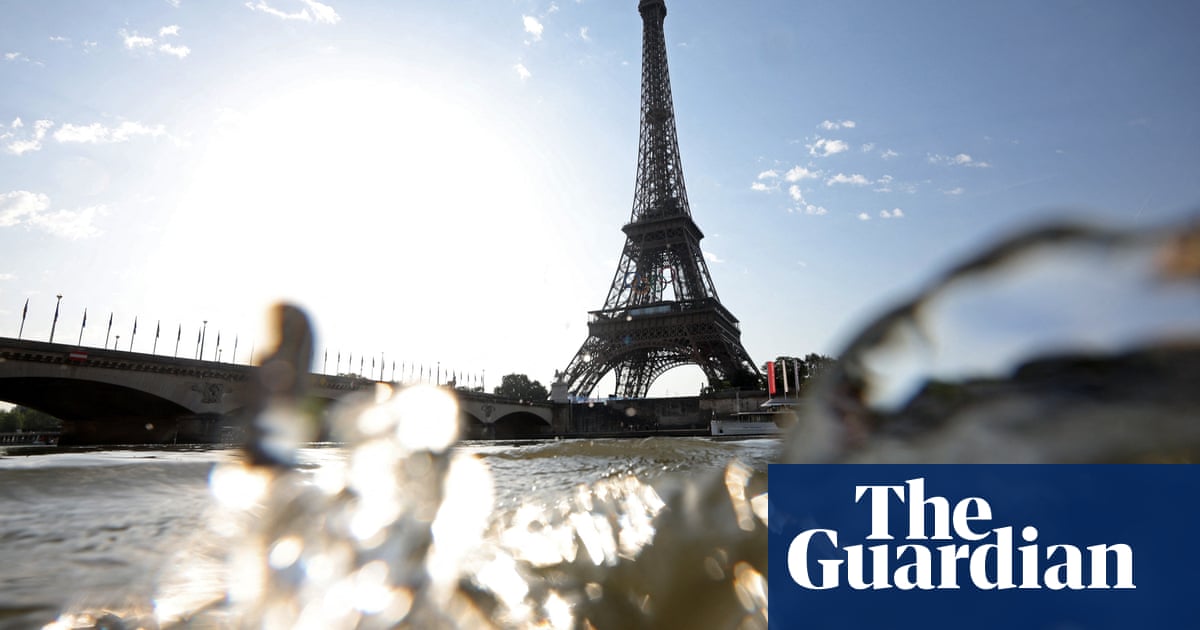In early May the mayor of Paris, Anne Hidalgo, the president of the Paris 2024 organising committee, Tony Estanguet, and other dignitaries officially opened a vast subterranean chamber near Austerlitz station in the south-east of the French capital.
Measuring 30m deep and 50m across, the cathedral-like receptacle, its roof held up by 20 enormous pillars, took 42 months to build, at a total cost of more than€90m. It also witnessed the accidental death of Amara Dioumassy, a construction worker.
The Bassin d’Austerlitz can hold 50,000 cubic metres – the equivalent of 20 Olympic swimming pools – and, after heavy rain, stores bacteria-laden stormwater that would otherwise end up in the Seine until it can be handled again by the sewage system.
It is the centrepiece of a massive €1.4bn state and city-funded clean-up of the Seine under way since 2015 that is intended to make the river swimmable again by 2025, and its first big test was to be Olympic men’s triathlon swimming event.
For the time being at least, it has failed: after a 3.30am inspection on Monday (it takes 18 hours for the results to come through), Games officials on Tuesday postponed the triathlon until Wednesday – with no certainty that it would be possible even then.
“Despite the improvement in the quality of the water over the past few hours,” the organising committee said in a statement, “the values recorded at certain parts of the course are above the acceptable limits.”
It was always going to be a race against time to guarantee a swimmable Seine for the Games. In the longer term, experts say there is no question it is possible and Olympic efforts have brought the date forward by 10 or 15 years.
Where it flows through central Paris, swimming has been banned in the river for a little over a century. In theory at least, it should be authorised again for the general public at three supervised sites from next summer, city hall promised last July.
As part of the clean-up plan, another holding tank has been built north of the city, treatment and purification plants have been upgraded along the river, and 20,000 homes and houseboats have been connected to the sewage system.
They have already borne fruit: the river water was already classed as clean enough to swim in for 70% of July and August last year, with the level of E coli bacteria– an indicator of faecal matter – comfortably below the limit considered safe.
Ten days ago, Hidalgo, Estanguet and hundreds of others, including journalists, proudly took a dip to show it was safe. The Seine is, undeniably, a whole lot cleaner than it used to be: in 1990, it hosted 14 species of fish; it now has 34.
But for all the progress made, as far as safe swimming is concerned the whole complex system relies on one thing: no exceptional rainfall.
Each year stormwater – a mix of rainwater and wastewater – from the overloaded Paris sewage system is released into the Seine, on average, a dozen times a year, a figure engineers say has been slashed to two by the new holding tanks.
after newsletter promotion
That means all but the very heaviest bouts of rainfall can now be dealt with. Unfortunately, during the opening ceremony on Friday evening and for most of the day on Saturday, the equivalent of half the rainfall of an average July fell on Paris.
The decision on whether to hold the race on Wednesday will be based on samples taken at 3.30am on Tuesday morning, which should in principle show a much-improved water quality after a day of strong sunshine on Monday.
However, Météo France is forecasting strong thunderstorms, heavy rain, hail and lightning from 6pm on Tuesday, meaning that if the race has to be postponed again – until Friday – pollutions levels would almost certainly be too high.
Besides pollution, there are also concerns about the rate of flow of the river, which after the recent heavy rainfall – after a very wet spring – is running at nearly a metre a second, considered the acceptable limit for the athletes.
Back in May, Michel Riottot, a former engineer at France’s National Centre for Scientific research, warned that whether or not the river would swimmable for the Games would essentially be down to luck and the law of averages.
“The sewers, tunnels and tanks like Austerlitz can now store 1.9m cubic metres of water,” he told AFP. “A little rainfall, like 10mm, amounts to about 1m cubic metres. With a really heavy downpour, say 20mm, it’s going to be overflowing everywhere.”
